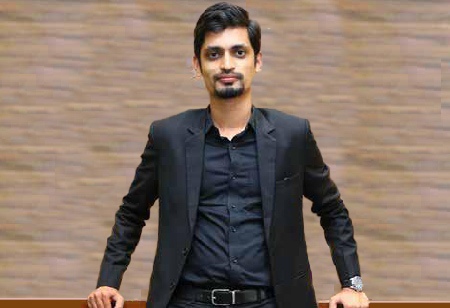
Constructing Structures with Bricks of Knowhow in this Tech-ade


M M Ahmed Siddiqui, Director & CEO, Aakash Associates, 0
Owning a building—a house or a commercial establishment—gives great satisfaction as it is considered a major asset against all other forms of investments. The Indian real estate and construction industry is expected to host significant growth, projected to reach $1 trillion by 2030. This is expected to be driven by factors like urbanization, increasing disposable income, and government initiatives. However, the industry is navigating numerous challenges, ranging from technological advancements to environmental concerns, regulatory changes, automation, project coordination, and maintaining safety and quality standards. M M Ahmed Siddiqui, Director & CEO, Aakash Associates, talks about tackling these challenges. Below is an excerpt from the interview.
How has the real civil engineering & Architecture market changed in the digital era?
In the digital era, the civil engineering and architecture industries have undergone a major transformation, primarily driven by artificial intelligence (AI) and advanced digital tools. AI has significantly improved accuracy in design, structural analysis, and planning, minimizing human error and rework. Time-consuming processes like drafting, estimation, and even site inspections have become faster and more efficient through automation and digital modeling.
Moreover, the dependency on manual labor has reduced due to the rise of technologies like Building Information Modeling (BIM), drones for surveying, and robotics for construction. These tools allow engineers and architects to visualize, simulate, and optimize designs before actual execution, saving both time and resources. Overall, the digital shift has led to smarter decision-making, better quality control, and streamlined project delivery.
How do you cater to the ever-increasing demand for customer experience?
To cater to the ever-increasing demand for enhanced customer experience, we focus on clear communication, personalized solutions, and timely delivery. We actively involve clients at every stage, right from conceptualization to execution, ensuring their vision is reflected in the final output. Digital tools and real-time updates help us keep clients informed and engaged throughout the process. Most importantly, we prioritize quality, transparency, and responsiveness, which build trust and long-term relationships with our clients.
How do you perceive the change in workforce dynamics around the integration of Gen Z?
The integration of Gen Z has definitely brought a shift in workforce dynamics. Gen Z professionals are highly tech-savvy, quick learners, and value purpose-driven work. They bring fresh perspectives, adapt easily to digital tools like BIM, AI, and project management software, and expect flexible, collaborative work environments. Unlike previous generations, they prefer transparent communication, continuous feedback, and opportunities for creativity and innovation. To harness their potential, organizations are evolving—adopting more digital workflows, offering skill development programs, and creating inclusive cultures that value both experience and new ideas.
Also Read: WAVES 2025: Burgeoning India's Orange Economy
What is the future of civil engineering and architecture after the explosion of technologies like GenAI, AR and VR?
The future of civil engineering and architecture is set to be revolutionary with the integration of technologies like Generative AI, Augmented Reality (AR), and Virtual Reality (VR). GenAI will automate and enhance design processes by generating optimized structural and aesthetic solutions based on set parameters, saving time and improving creativity. AR and VR will transform client engagement and project visualization, allowing stakeholders to walk through designs virtually before construction even begins. These technologies will lead to smarter planning, fewer errors, and more efficient execution. Ultimately, they’ll bridge the gap between imagination and reality, making the construction process more transparent, immersive, and innovative.
The future of civil engineering and architecture is set to be revolutionary with the integration of technologies like Generative AI, Augmented Reality (AR), and Virtual Reality (VR).
How do you perceive the change in workforce dynamics around the integration of Gen Z?
The integration of Gen Z has definitely brought a shift in workforce dynamics. Gen Z professionals are highly tech-savvy, quick learners, and value purpose-driven work. They bring fresh perspectives, adapt easily to digital tools like BIM, AI, and project management software, and expect flexible, collaborative work environments. Unlike previous generations, they prefer transparent communication, continuous feedback, and opportunities for creativity and innovation. To harness their potential, organizations are evolving—adopting more digital workflows, offering skill development programs, and creating inclusive cultures that value both experience and new ideas.
Also Read: WAVES 2025: Burgeoning India's Orange Economy
What is the future of civil engineering and architecture after the explosion of technologies like GenAI, AR and VR?
The future of civil engineering and architecture is set to be revolutionary with the integration of technologies like Generative AI, Augmented Reality (AR), and Virtual Reality (VR). GenAI will automate and enhance design processes by generating optimized structural and aesthetic solutions based on set parameters, saving time and improving creativity. AR and VR will transform client engagement and project visualization, allowing stakeholders to walk through designs virtually before construction even begins. These technologies will lead to smarter planning, fewer errors, and more efficient execution. Ultimately, they’ll bridge the gap between imagination and reality, making the construction process more transparent, immersive, and innovative.